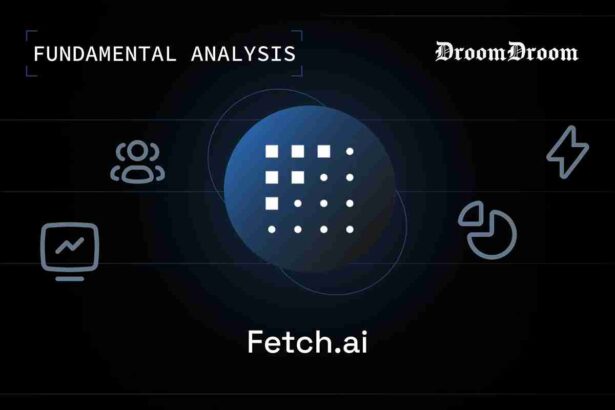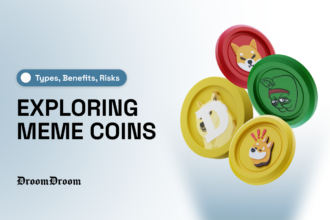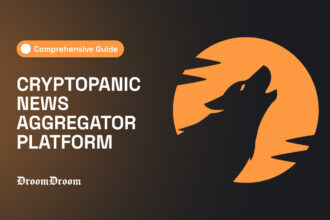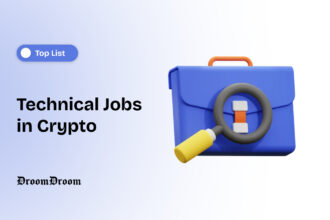It is simply an undeniable fact that AI tokens are growing massively in terms of popularity and mainstream adoption. Certainly, the increase in their popularity is not unconnected to the rising interest in Artificial Intelligence technologies across the board. These cryptocurrencies leverage on the capabilities of the technologies to foster their price performance and functionality. Remarkably, they serve as native tokens to many of these AI-focused blockchain platforms. By virtue of this, these tokens help their platforms monetize AI services offered to users. More so, AI tokens, just like other cryptocurrencies, are utility-oriented. To know more about AI tokens, read this article.
No doubt, the rising relevance of AI technologies across major sectors of the world has continued to impact all its projects, particularly in the crypto space. Certainly, one of those AI-focused projects currently leveraging on the trend is Fetch.ai (FET). Here, the fundamental assessment of Fetch.ai will be done in this piece
Summary of Fetch.ai WhitePaper
The project seeks to combine the potentials of artificial intelligence to avail a network where people can share data resources with ease. Simply put, fetch.ai serves as a medium through which suppliers of data can access data users. Its ecosystem thrives on three components, known as Autonomous Economic Agents (AEAs), the Open Economic Framework, and the Smart Ledger. These trio forms the entire network.
Remarkably, the AEAs are virtual citizens on the network, running to foster the productivity of data systems. The agents make decisions on behalf of the network and have the capacity to learn from past mistakes. The Open Economic Framework on the other hand helps to coordinate the communication and interactions among the agents. As for smart ledger, it serves as a point which aids the processing of every transaction unfolding on the platform.
No doubt, Fetch.ai has been able to overwhelmingly transform the data sector. Prior to its emergence, it seems absolutely impossible for data to sell itself. However, now, with its Python-based development suite, data is able to independently harness every opportunity to thrive in any marketplace. More so, the AI-focused blockchain utilizes WASM-based smart contract language to enable developers to deploy their projects on its network. It has a native token, known as FET.
Team Behind the Project
In a bid to analyze Fetch.ai, it is imperative to do an overview of its founding team. According to our findings, the project was founded by Humayun Sheik, Toby Simpson, and Thomas Hain in 2018. Currently, Sheik is the CEO and a member of the board of directors. He is a founding investor in Deepmind and founder of uVue. Meanwhile, Simpson and Ward are the COO and CTO of the project respectively.
Market Metrics of FET
It is noteworthy that FET made its market debut in 2019 following an initial coin offering. Then, the token traded around $0.42. Barely a month after, it saw a surge that spiked its value to $0.54. However, around late 2019, the token experienced a dip, trading within $0.04 till the end of the year. In January 2020, the token saw a slight recovery to $0.06.
But, following the global economic downturns causes by the implications of the corona virus pandemic, it recorded a consistent decline for many weeks, to an extent that it fell as low as $0.01. Although, around August, the token began to see a steady gain that helped it reached a peak of $0.19. Unfortunately, price corrections forced the token back to $0.05 before the end of the year.
2021 was a bit exciting for the fetch.ai crypto. Around January, the token was already trading at $0.08. Shortly after, the launch of its mainnet spiked the price of the token by ten times. Occasioned by this development, the token traded as high as $0.82 around March. Later in the year, the bull run greeted the crypto market, making fetch.ai and other crypto assets to spike. As for fetch.ai, it began to trade around $1.17 around September.
Sadly, the 2022 bearish trend truncated the growth momentum of the token. The market conditions made the token to trade below $0.10 till December when its team launched Fetch wallet. Following the release of this wallet, the token spiked by 32%. In January, the success of ChatGPT, an AI-focused project helped the token to consolidate on its gains, thereby reaching $0.25. Between January to March 25, it surged to $0.39.
Currently, the AI token has a market cap of $379.15 million, according to data from coinmarketcap. Recently, DWF labs invested $40 million in the project to aid its Advancing Autonomous Agent Technology (AAAT). This development also triggered a sharp surge in the price of the token. Although past performances of a token is not an indication of its future results. But, it is expected that as the use cases of its platform increase, the token is tipped to grow even further.
Tokenomics
Tokenomics can be described as the economic and financial characteristics of a given cryptocurrency. It cuts across its circulation system, use cases, market value, market cap, supply and more. In this article, the tokenomics of FET, the native crypto of Fetch.ai shall be examined as follows:
Price: $0.3618
Market Dominance: 0.03%
Market Cap: $297,097,966
Fully Diluted Market Cap: $418, 278,842
All-time high: $1.1898
All-time low: $0.00827
Market Rank: 121
Maximum Supply: Undisclosed
Total Supply: 1,152,997,575 FET
Circulating Supply: 818,912,300 FET
Distribution
A fundamental insight into Fetch.ai leads us into analyzing how its tokens are distributed. According to our findings, 17.4% of the maximum total supply of the token has been earmarked for future releases. Meanwhile, 67% of the supply was set aside for founders, foundation, advisors, and token sales. 15% of the tokens is allocated to miners for creating new blocks that generate the token.
Use Cases of FET
It is noteworthy that FET as the native token of Fetch.ai is an ERC-20 token. It facilitates every economic activity on the network. Primarily, the crypto is the major source of value on the platform. This thus means the token is the only acceptable medium of payment for the AI services offered on the network. Beyond serving as the primary means of exchange on the Fetch.ai ecosystem, it also serve other purposes.
One of these purposes is staking. Certainly, FET token can be staked. Staking helps to power, fuel and secure its platform. By staking the token, its holders amass rewards for their efforts towards securing the platform. With this, Fetch.ai provides an avenue for these holders to earn passive income. Additionally, the platform usually incentivizes distributors or offerers of data in Fetch.ai tokens. According to our findings, the total supply of the AI-focus crypto stands at 1,152,997,575 FET. It also has a circulating supply of 818,912,300 FET. Intending investors may acquire FET in any of those crypto exchanges that have listed it on their network.
Competition
Graph (GRT) – GRT is one of the notable AI projects that have seen remarkable growth in recent times. Its native protocol is designed to primarily index data from blockchains for easy access. Currently, both GRT and FET are jostling for market relevance.
Render network (RNDR): Here is another substantial competitor for the Fetch.ai project. The platform performs a rendering function, by transforming a 2D or 3D model into a real image.
Future of FET tokens
Amid the success of ChatGPT, it should be recalled that the AI token joined its peers to record a massive price movement. It is interesting to note that the increasing interest in AI-focused projects have continued to impact the performance of the tokens in general. Surely, the future of Fetch.ai is bright if the adoption keeps growing.
Similarly, the future utility of its native protocol will also play a significant role in the future performance of the token. Currently, the team behind the project is making a concerted effort to advance its autonomous agent technology. The vision of the team received a massive boost in late March after DWF labs invested a whooping $40 million into the project. This investment will surely impact the success of the project as well as the future performance of the token. Hence, it is expected that the token grows in value as the utility of its platform continues to grow.
“DWF Labs Invests $40M in https://t.co/kJ9URVpOul, Advancing Autonomous Agent Technology”
🎉 Our team at @Fetch_ai, in collaboration with @DWFLabs, raised $40M to advance decentralized machine learning deployment 🔓🤖
Join us in our mission to unlock the https://t.co/nnv6xGGSbE…
— Fetch.ai (@Fetch_ai) March 30, 2023Drawback and Weaknesses
Just like every other crypto asset, fetch.ai also has its own weakness. At the moment, its utility is only limited to its platform, which thus restricts its adoption rate. Certainly, most of those holding the tokens are users or community members of its ecosystem. They either use the token to access data services on the network or stake it to earn rewards. However, there are indications that the utility of the token might be widened beyond its ecosystem in the future. As the token grows in relevance, some projects may adopt it as a medium of exchange on their network, thereby enhancing its usability.
Although AI-focused projects have continued to grow in popularity, investors are still skeptical about dabbling into their tokens. This thus means most of the AI tokens, including fetch.ai, have not earned the confidence of investors, thereby militating its adoption.
Our Takeaway
No doubt, Fetch.ai has been able to overwhelmingly transform the data sector. Prior to its emergence, it seems absolutely impossible for data to sell itself. However, now, with its Python-based development suite, data is able to independently harness every opportunity to thrive in any marketplace. At the moment, the project is doing well despite the stern competition in the industry.
As regards its native token, analysts have tipped it to attain $2 before the end of 2024. However, it is imperative to note that the projected growth for this token can only be feasible if the utility of its native protocol is expanded. Certainly, the team behind the project are working round the clock to see the project succeed. Hence, there are exciting times ahead for the token.




















